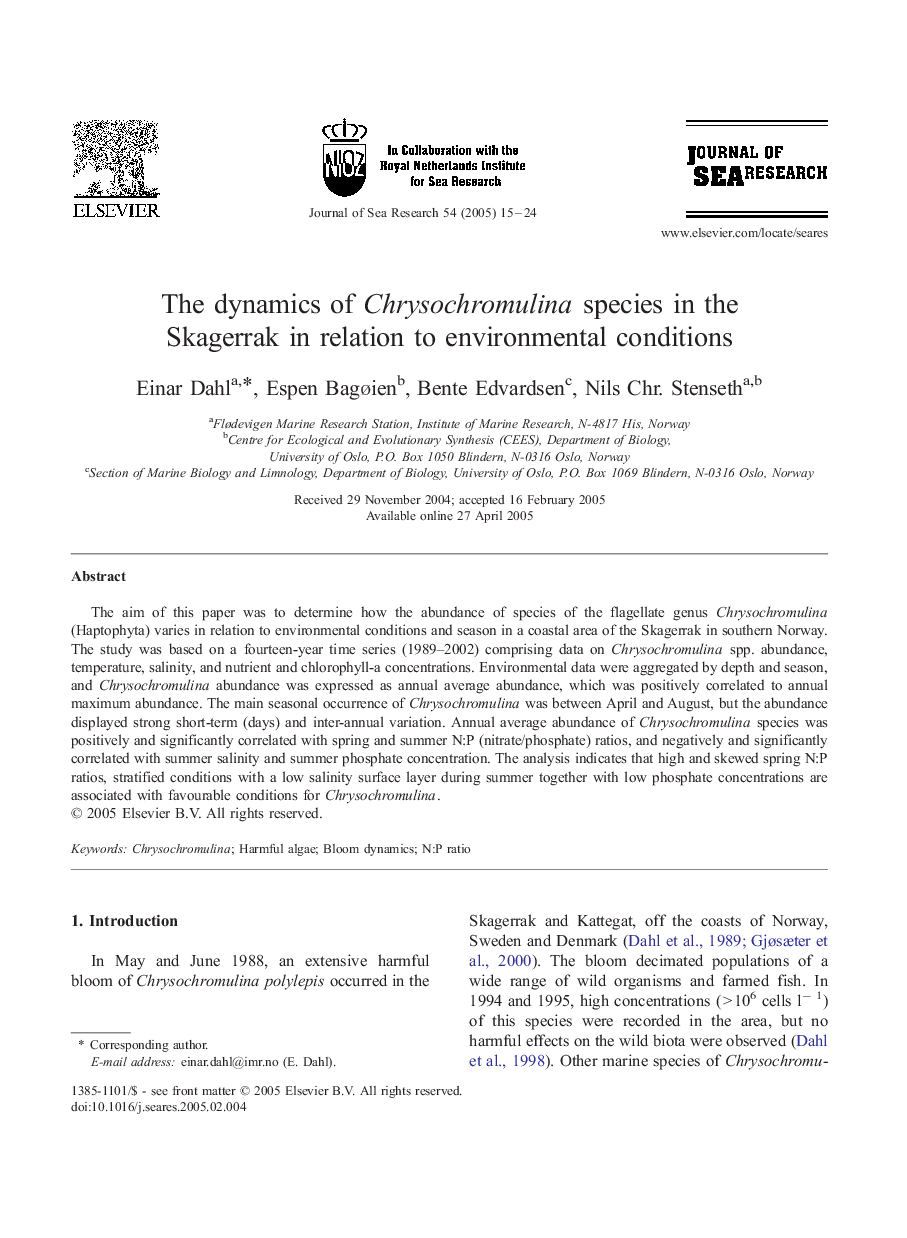| Article ID | Journal | Published Year | Pages | File Type |
|---|---|---|---|---|
| 9484084 | Journal of Sea Research | 2005 | 10 Pages |
Abstract
The aim of this paper was to determine how the abundance of species of the flagellate genus Chrysochromulina (Haptophyta) varies in relation to environmental conditions and season in a coastal area of the Skagerrak in southern Norway. The study was based on a fourteen-year time series (1989-2002) comprising data on Chrysochromulina spp. abundance, temperature, salinity, and nutrient and chlorophyll-a concentrations. Environmental data were aggregated by depth and season, and Chrysochromulina abundance was expressed as annual average abundance, which was positively correlated to annual maximum abundance. The main seasonal occurrence of Chrysochromulina was between April and August, but the abundance displayed strong short-term (days) and inter-annual variation. Annual average abundance of Chrysochromulina species was positively and significantly correlated with spring and summer N:P (nitrate/phosphate) ratios, and negatively and significantly correlated with summer salinity and summer phosphate concentration. The analysis indicates that high and skewed spring N:P ratios, stratified conditions with a low salinity surface layer during summer together with low phosphate concentrations are associated with favourable conditions for Chrysochromulina.
Keywords
Related Topics
Physical Sciences and Engineering
Earth and Planetary Sciences
Oceanography
Authors
Einar Dahl, Espen Bagøien, Bente Edvardsen, Nils Chr. Stenseth,
